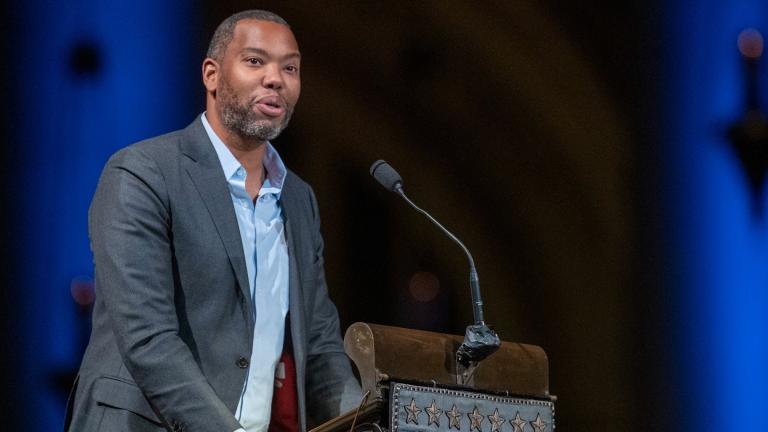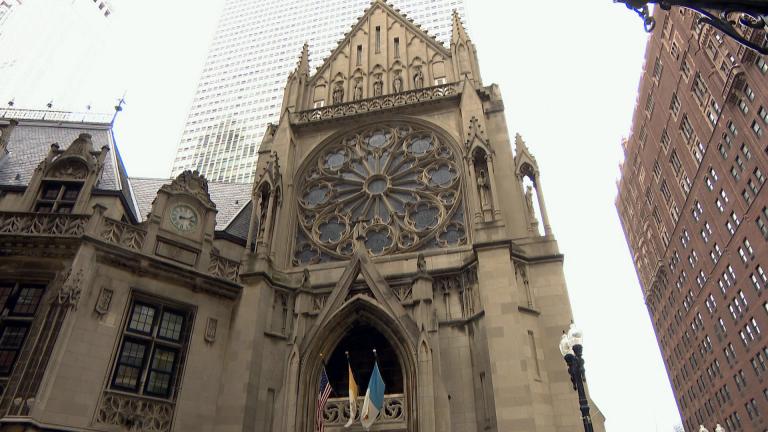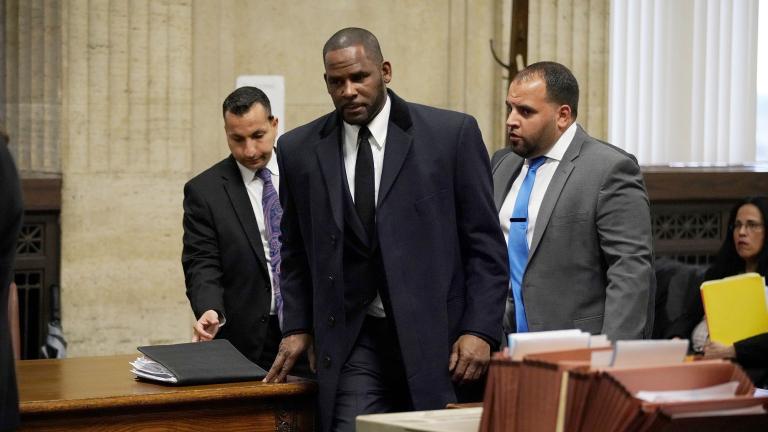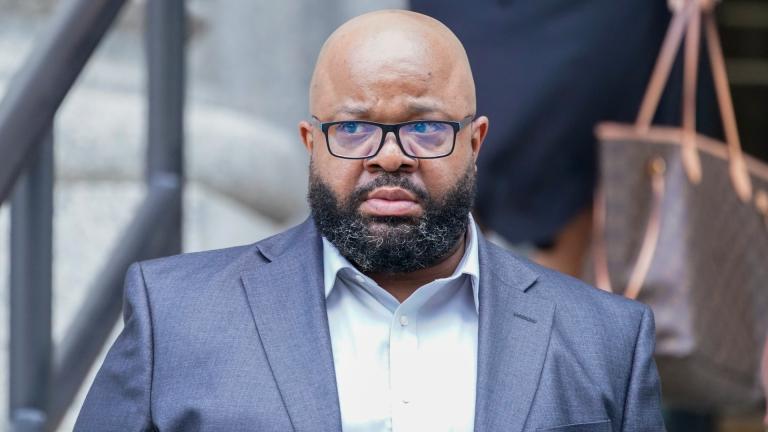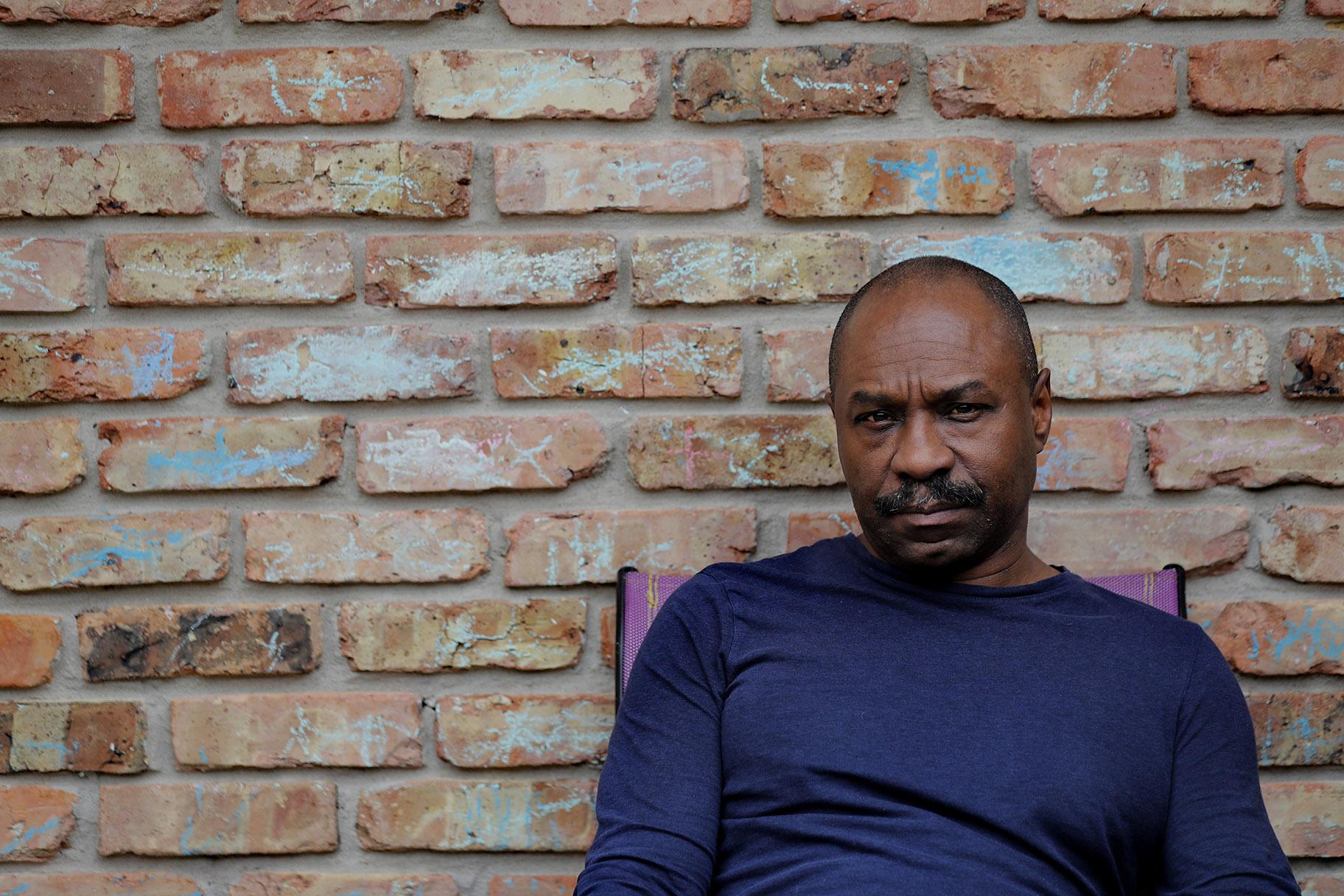 Terrence Sample poses for a portrait in Baton Rouge, La., on Thursday, Dec. 12, 2019. Sample, now 58, was a middle school student at St. Procopius Catholic school, when Father Terence Fitzmaurice took an interest in him. He was groomed, isolated and assaulted for several years. (AP Photo / Gerald Herbert)
Terrence Sample poses for a portrait in Baton Rouge, La., on Thursday, Dec. 12, 2019. Sample, now 58, was a middle school student at St. Procopius Catholic school, when Father Terence Fitzmaurice took an interest in him. He was groomed, isolated and assaulted for several years. (AP Photo / Gerald Herbert)
The Samples were a black Chicago family, with six children and few resources. The priest helped them with tuition, clothes, bills. He offered the promise of opportunities — a better life.
He also abused all the children.
They told no one. They were afraid of not being believed and of losing what little they had, said one son, Terrence Sample. And nobody asked, until a lawyer investigating alleged abuses by the same priest prompted him to break his then 33-year silence.
“Somebody had to make the effort,” Sample said. “Why wasn’t it the church?”
Even as it has pledged to go after predators in its ranks and provide support to those harmed by clergy, the church has done little to identify and reach sexual abuse victims. For survivors of color, who often face additional social and cultural barriers to coming forward on their own, the lack of concerted outreach on behalf of the church means less public exposure — and potentially, more opportunities for abuse to go on, undetected.
Of 88 dioceses that responded to an Associated Press inquiry, seven knew the ethnicities of victims. While it was clear at least three had records of some sort, only one stated it purposely collected such data as part of the reporting process. Native Americans, African Americans, Hispanics, Asians, Pacific Islanders and Hawaiians make up nearly 46% of the faithful in the U.S., according to the Center for Applied Research in the Apostolate, an authoritative source of Catholic-related data. But the Catholic Church has made almost no effort to track the victims among them.
“The church has to come into the shadows, into the trenches to find the people who were victimized, especially the people of color,” Sample said. “There are other people like me and my family, who won’t come forward unless someone comes to them.”
Brian Clites, a leading scholar on clergy sexual abuse and professor at Case Western Reserve University in Cleveland, said the church has demonstrated a pattern of funneling predator priests to economically disadvantaged communities of color, where victims have much more to lose if they report their abuse.
“They are less likely to know where to get help, less likely to have money for a lawyer to pursue that help and they are more vulnerable to counterattacks” from the church, which will hire investigators against the survivors, said Clites.
Alaska leads the nation in rates of sexual violence, and Florence Kenney said the Catholic church has played a role in perpetuating the abuse of natives there.
Kenney, now 85, said she was abused at the Holy Cross Mission in Holy Cross, Alaska. Kenney is indigenous, and she described the relationship between the Catholic Church and Native Alaskan families as both predatory and symbiotic: The church provided food, money and resources to the village, Kenney said, in exchange for labor and silence.
“The church needed those people, and the people needed the church,” Kenney said. “A family might sacrifice one or two children, look the other way, to preserve their relationship with the church for the others.”
There is no accurate count of clergy abuse survivors. A special report commissioned by the Colorado attorney general’s office examining abuse within state dioceses and released in October determined “victims of child sex abuse and particularly those abused by clergy are less likely to report their abuse than other crime victims.”
As for minority survivors, dioceses rarely collect demographic data.
The AP contacted 178 dioceses to ask if they collect such data. Few who responded knew the race or ethnicity of claimants. Some said demographics aren’t relevant, while others cited privacy concerns.
One diocese — Alexandria, Louisiana — shared a spreadsheet of survivors, including demographics, and without names.
The diocese began keeping such data in 2015, when Lee Kneipp, the victim assistance coordinator, took the job. Kneipp said knowing the race and ethnicity of victims helps investigative efforts and enables a deeper examination of records and the potential ability to find others who have not been acknowledged.
In looking into one African American survivor’s abuse claim, Kneipp was able to locate two more survivors of color from the same parish; the priest, he said, abused only boys in low-income black communities.
Levi Monagle, an Albuquerque lawyer whose firm has close to 200 clients, including Native Americans and Hispanics, said there can be cultural and logistical impediments to contacting survivors who have not come forward.
“We don’t go cold-calling people, knocking on doors, even if you have a serial perpetrator and a survivor who says we know there were other altar boys who traveled with this guy,” he said.
The firm puts out press releases but some of the Native American population and communities are in “extreme geographic isolation” compared with other places and often don’t have access to media.
Richard King, 70, was sexually abused on the Assiniboine reservation in Fort Belknap, Montana, where he grew up. He said taboos and shame kept him silent. Instead he abused alcohol and drugs. That, he believes, is how tribal members dealt with the abuses they face, rather than speaking out.
His mother’s tribe was devoutly Catholic, and he doubted he would be believed.
“If children tell their parents that the clerics abused you, I would probably have gotten a whipping. I would have gotten one at church and one at home,” King said. “They’d say, ‘Shut up, that doesn’t happen.’“
He began speaking to small groups he counseled, sharing some of his story. But it was nearly 50 years before he met with an attorney, Andrew Chasan; he was ready to share what happened to him, and sit down with Montana media.
When the Society of Jesus, Oregon Province, faced scores of suits accusing its priests of abuse, it filed for bankruptcy. King filed a claim and received a settlement, though in a statement to the AP the province said King’s abuser was not a Jesuit priest.
Phillip Aaron, a Seattle-based attorney who represented the Sample family, said his client base, which includes hundreds of African American survivors of clergy abuse, stayed silent because they feared ridicule, or worse.
“It was such a stigma,” Aaron said. “That is still present now. We haven’t touched the top of the barrel of black victims. There are so many black victims who have not come forward who are suffering in silence because of the stigma.”
Some survivors, like Sample, kept quiet because they did not want the resources their abusers provided to dry up, Aaron said.
Sample, now 58, was a middle school student at St. Procopius Catholic school, when his abuser, a priest there, took an interest in him. He was groomed, isolated and assaulted for several years, he said.
“I was thinking I have to keep this secret,” Sample said. “One, we have to eat and two, we have to stay in school, and this would kill my mom if she knew.”
Jacob Olivas’ secrecy emanated from another source. He was raised in California, the son of two Mexican immigrants. His father, he said, was the embodiment of machismo: strong, silent, stoic. Olivas was abused by a priest at age 6, and when his father found out he instructed Jacob to stay quiet. It was never discussed, he said. He had no therapy, no opportunity to process what had happened.
“I was supposed to keep quiet, to forget about it,” Olivas said.
“That’s just the way the Hispanic community is. They have a reverence for the church, there’s no ands, there’s no buts, there’s no questions: You respect the church, you respect the father,” he said. “I think it was something that made my father feel more proud: This priest is taking an interest in my son.”
Such reluctance to come forward, whether fueled by social or cultural barriers, shame or fear, means some victims will stay silent unless they are drawn out.
“How big is the iceberg that’s under the water still, when you’re talking about survivors?” Monagle asked. “Every culture carries the weight of its own taboos.”
___
Associated Press religion coverage receives support from the Lilly Endowment through the Religion News Foundation. The AP is solely responsible for this content.

